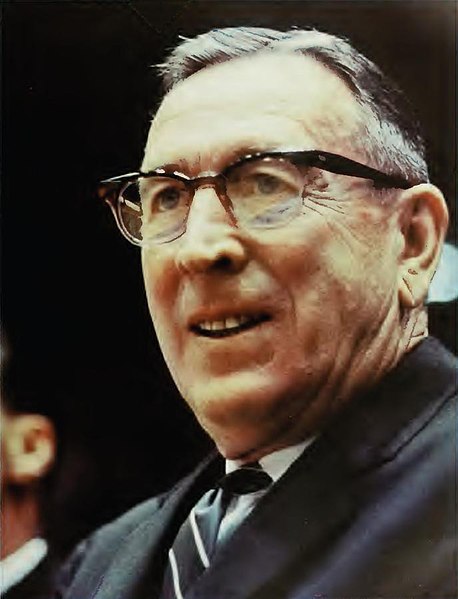10 Habits of High-Performance Leaders
Unlocking Your Leadership Potential: The 10 Habits of High-Performance Leaders
Leadership is a critical component of achieving high performance in any organization or team. It is the ability of an individual to guide, motivate, and inspire others towards a common goal. A high-performance leader is someone who not only achieves their own goals but also helps others to do the same. In today’s rapidly changing business landscape, leadership has become more important than ever, and the habits and traits of high-performance leaders are in high demand.
In this article, we will explore 10 habits of high-performance leaders that are essential for achieving success in any leadership role. These habits have been identified as key drivers of success by experts in the field of leadership and have been proven to lead to better results in both personal and professional settings.
The first habit we will discuss is setting clear and measurable goals. Setting goals is the foundation of any successful leadership journey, and high-performance leaders understand the importance of creating clear and measurable objectives. They know that without a clear target, it is impossible to know if progress is being made or if the desired outcome has been achieved.
The second habit we will discuss is empowering and trusting others. High-performance leaders understand that they cannot do everything on their own and that their team members are critical to achieving success. They empower their team members by giving them the autonomy to make decisions and encouraging them to take ownership of their work. They also build trust by being transparent, consistent, and reliable.
The third habit we will discuss is active listening and communication. Effective communication is a key trait of high-performance leaders, and they understand that the ability to actively listen and communicate is essential to building strong relationships and achieving results. They are skilled at listening to others, understanding their perspectives, and communicating their own ideas in a clear and concise manner.
The fourth habit we will discuss is adaptability and flexibility. High-performance leaders understand that change is inevitable, and they are able to adapt to new situations and navigate challenges with ease. They are open to new ideas and are not afraid to take risks when necessary.
The fifth habit we will discuss is continuous learning and development. High-performance leaders never stop learning and developing themselves. They understand that in order to be effective leaders, they must be continuously improving their skills and knowledge. They seek out opportunities to learn and grow, and they are always open to feedback and constructive criticism.
These are just a few of the habits that we will be discussing in this article. Each habit will be explored in depth, and we will provide examples of how these habits have led to high performance in leaders. By understanding and implementing these habits, readers can improve their own leadership skills and achieve greater success in their professional and personal lives.
Setting Clear and Measurable Goals
One of the most important habits of high-performance leaders is setting clear and measurable goals. Setting goals is the foundation of any successful leadership journey, and high-performance leaders understand the importance of creating clear and measurable objectives. They know that without a clear target, it is impossible to know if progress is being made or if the desired outcome has been achieved.
One of the key benefits of setting clear and measurable goals is that it helps leaders to focus their efforts and resources on what is most important. By setting specific and time-bound goals, leaders are able to prioritize their actions and allocate resources effectively. This helps to ensure that their team is working towards a common goal and that everyone is aligned in their efforts.
Another benefit of setting clear and measurable goals is that it helps leaders to track progress and measure success. By setting clear and measurable objectives, leaders can track their progress and make adjustments as needed. This allows them to identify areas where they are falling short and to take corrective action in order to achieve their goals.
High-performance leaders also understand the importance of involving their team members in the goal-setting process. By involving their team in the goal-setting process, leaders can ensure that everyone is invested in the outcome and that they have a sense of ownership over the goals. This helps to build a culture of accountability and ownership, which is critical for achieving high performance.
One example of a leader who sets clear and measurable goals is Jeff Bezos, the founder and CEO of Amazon. Bezos is known for setting ambitious goals for his company and for himself. He sets clear and measurable objectives for his team and holds them accountable for achieving those goals. This approach has helped Amazon to become one of the most successful companies in the world, and it is a key driver of their high performance.
Setting clear and measurable goals is a habit of high-performance leaders that is essential for achieving success. By setting specific and time-bound objectives, leaders can focus their efforts and resources on what is most important, track progress and measure success, and involve their team members in the goal-setting process. By understanding and implementing this habit, readers can improve their own leadership skills and achieve greater success in their professional and personal lives.
Empowering and Trusting Others
Another key habit of high-performance leaders is empowering and trusting others. High-performance leaders understand that they cannot do everything on their own and that their team members are critical to achieving success. They empower their team members by giving them the autonomy to make decisions and encouraging them to take ownership of their work. They also build trust by being transparent, consistent, and reliable.
One of the key benefits of empowering and trusting others is that it helps to build a culture of accountability and ownership. When team members are given the autonomy to make decisions, they are more likely to take ownership of their work and to be invested in the outcome. This helps to build a culture of accountability, where everyone is responsible for achieving the goals of the organization.
Another benefit of empowering and trusting others is that it helps to build a more engaged and motivated workforce. When team members feel empowered and trusted, they are more likely to be motivated and engaged in their work. This results in higher levels of productivity and performance, which can help to drive the success of the organization.
High-performance leaders also understand the importance of building trust with their team members. Trust is the foundation of any successful relationship, and it is critical for achieving high performance. High-performance leaders build trust by being transparent, consistent, and reliable. They are open and honest with their team members, and they follow through on their commitments. This helps to build a culture of trust, where team members feel comfortable sharing their ideas and perspectives, and where they are more likely to be engaged and motivated.
One example of a leader who empowers and trusts others is Howard Schultz, the former CEO of Starbucks. Schultz is known for his leadership style, which emphasizes empowering and trusting his team members. He has built a culture of accountability and ownership by giving his team members the autonomy to make decisions, and he has built a culture of trust by being transparent, consistent, and reliable. This approach has helped Starbucks to become one of the most successful companies in the world, and it is a key driver of their high performance.
Empowering and trusting others is a habit of high-performance leaders that is essential for achieving success. By giving team members the autonomy to make decisions, encouraging them to take ownership of their work and building trust with them, leaders can build a culture of accountability, ownership, engagement and motivation which can drive the success of the organization. By understanding and implementing this habit, readers can improve their own leadership skills and achieve greater success in their professional and personal lives.
Continuous Learning and Growth
Another key habit of high-performance leaders is continuous learning and growth. High-performance leaders understand that the world is constantly changing, and that they need to be adaptable and flexible in order to stay competitive. They are always seeking out new knowledge, skills, and perspectives, and they are open to learning from their mistakes.
One of the key benefits of continuous learning and growth is that it helps leaders to stay current and relevant in their field. By constantly seeking out new knowledge, skills, and perspectives, leaders are able to stay up to date with the latest trends and best practices in their industry. This helps them to make better decisions, solve problems more effectively, and stay competitive.
Another benefit of continuous learning and growth is that it helps leaders to be more adaptable and flexible. By being open to new ideas and perspectives, leaders are able to think creatively and come up with innovative solutions to problems. This helps them to be more adaptable and responsive to change, which is critical in today’s fast-paced business environment.
High-performance leaders also understand the importance of learning from their mistakes. They are not afraid to take risks and try new things, and they are able to learn from their failures. They understand that failure is a natural part of the learning process and that it is an opportunity to grow and improve.
One example of a leader who exemplifies continuous learning and growth is Elon Musk, the CEO of Tesla and SpaceX. Musk is known for his relentless pursuit of knowledge and for his willingness to take risks. He is constantly seeking out new knowledge and skills, and he is open to learning from his mistakes. This approach has helped Musk to achieve success in multiple industries, and it is a key driver of his high performance.
Continuous learning and growth is a habit of high-performance leaders that is essential for achieving success. By constantly seeking out new knowledge, skills, and perspectives, being open to new ideas and perspectives, and learning from their mistakes, leaders can stay current, relevant, adaptable and flexible in their field. By understanding and implementing this habit, readers can improve their own leadership skills and achieve greater success in their professional and personal lives.
Clear Communication
Effective communication is a critical habit of high-performance leaders. Clear and effective communication is essential for building trust and collaboration within teams, for effectively communicating goals and expectations, and for ensuring that everyone is on the same page. High-performance leaders understand the importance of clear communication and make it a priority in all of their interactions.
One of the key benefits of clear communication is that it helps to build trust and collaboration within teams. When leaders communicate clearly and effectively, team members are more likely to understand what is expected of them, and they are more likely to be engaged and motivated. This helps to build a culture of trust, where team members feel comfortable sharing their ideas and perspectives and where they are more likely to be engaged and motivated.
Another benefit of clear communication is that it helps to ensure that everyone is on the same page. When leaders communicate goals and expectations clearly, team members are more likely to understand what needs to be done and how to do it. This helps to ensure that everyone is working towards the same objectives, which can help to drive the success of the organization.
High-performance leaders also understand the importance of active listening. They are not only able to communicate effectively but also able to listen actively to their team members, understand their perspectives and ideas, and respond appropriately. This helps to build strong relationships and fosters a culture of open and honest communication.
One example of a leader who exemplifies clear communication is Sheryl Sandberg, the COO of Facebook. Sandberg is known for her clear and effective communication style, which has helped to build a culture of trust and collaboration within Facebook. She is also known for her ability to communicate goals and expectations clearly, which has helped to ensure that everyone is working towards the same objectives. This approach has helped Facebook to become one of the most successful companies in the world, and it is a key driver of their high performance.
Clear communication is a habit of high-performance leaders that is essential for achieving success. By communicating effectively, actively listening and building trust and collaboration within teams, leaders can ensure that everyone is on the same page, foster a culture of open and honest communication and drive the success of the organization. By understanding and implementing this habit, readers can improve their own leadership skills and achieve greater success in their professional and personal lives.
Empowering and Developing Others
High-performance leaders understand the importance of empowering and developing others. They recognize that the success of an organization is not solely dependent on the actions and decisions of the leader, but on the capabilities and contributions of the entire team. By empowering and developing others, leaders are able to create a culture of growth and success, where team members feel valued and motivated to do their best work.
One of the key benefits of empowering and developing others is that it helps to create a culture of growth and success. When leaders empower their team members to take ownership of their work and to make decisions, they are creating an environment where team members feel valued and motivated to do their best work. This helps to foster a culture of innovation and creativity, where team members are more likely to come up with new and creative ideas that can drive the success of the organization.
Another benefit of empowering and developing others is that it helps to build a strong and capable team. By investing in the development of team members, leaders are able to build a team that is capable of achieving success. This helps to ensure that the organization has the right people in the right roles, and that the team is able to adapt and evolve as the business changes.
High-performance leaders also understand the importance of mentorship and coaching. They take the time to mentor and coach their team members, helping them to develop new skills and to achieve their goals. This helps to create a culture of continuous learning and growth, where team members are able to develop new skills and advance in their careers.
One example of a leader who exemplifies empowering and developing others is Oprah Winfrey. Oprah is known for her ability to empower and develop others, through her talk show, her production company, and her philanthropic efforts. She has mentored and coached many successful individuals, and she has created an environment where team members feel valued and motivated to do their best work. This approach has helped Oprah to achieve success in multiple industries, and it is a key driver of her high performance.
Empowering and developing others is a habit of high-performance leaders that is essential for achieving success. By empowering team members to take ownership of their work, investing in the development of team members, mentoring and coaching, leaders can create a culture of growth and success, build a strong and capable team, and drive the success of the organization. By understanding and implementing this habit, readers can improve their own leadership skills and achieve greater success in their professional and personal lives.
Resilience and Adaptability
High-performance leaders are resilient and adaptable in the face of change and challenges. They understand that change is inevitable, and that the ability to adapt to change is a key driver of success. They are able to remain calm and focused under pressure, and they are able to quickly and effectively adapt to new situations.
One of the key benefits of resilience and adaptability is that it helps leaders to navigate change and challenges. When leaders are resilient and adaptable, they are able to remain calm and focused under pressure, which helps them to make better decisions and to take effective action. This is especially important in today’s fast-paced business environment, where change is constant and challenges are inevitable.
Another benefit of resilience and adaptability is that it helps leaders to build a culture of innovation and creativity. When leaders are able to adapt to change and challenges, they are able to create an environment where team members feel empowered to take risks, to think outside the box, and to come up with new and creative solutions. This helps to foster a culture of innovation and creativity, which is essential for achieving success in today’s competitive business environment.
High-performance leaders also understand the importance of learning from failure. They are able to learn from their mistakes and to use those lessons to improve their decision-making and performance in the future. This helps to build a culture of continuous learning and improvement, where team members are able to learn from their mistakes and to improve their performance over time.
One example of a leader who exemplifies resilience and adaptability is Jeff Bezos, the founder and CEO of Amazon. Bezos is known for his ability to navigate change and challenges, and for his ability to quickly and effectively adapt to new situations. He has built Amazon into one of the most successful companies in the world, and he has done so by remaining resilient and adaptable in the face of change and challenges.
Resilience and adaptability are habits of high-performance leaders that are essential for achieving success. By remaining resilient and adaptable in the face of change and challenges, leaders can navigate change and challenges, create a culture of innovation and creativity, and build a culture of continuous learning and improvement. By understanding and implementing this habit, readers can improve their own leadership skills and achieve greater success in their professional and personal lives.
Emotional Intelligence
High-performance leaders possess a high degree of emotional intelligence, which allows them to effectively manage their own emotions, as well as the emotions of others. Emotional intelligence is the ability to understand, manage, and effectively communicate one’s own emotions and the emotions of others. It is a critical skill for leaders, as it enables them to build strong relationships with team members, to effectively manage conflict, and to create a positive and productive work environment.
One of the key benefits of emotional intelligence is that it allows leaders to build strong relationships with team members. When leaders are able to understand and manage their own emotions, they are able to communicate more effectively with team members and to build trust and respect. This helps to create a positive and productive work environment, where team members feel valued and respected.
Another benefit of emotional intelligence is that it allows leaders to effectively manage conflict. When leaders are able to understand and manage their own emotions, they are able to remain calm and rational in the face of conflict, and to find effective solutions to resolve conflicts. This helps to create a positive and productive work environment, where conflicts are resolved quickly and effectively.
Emotional intelligence also helps leaders to create a positive and productive work environment. When leaders are able to understand and manage their own emotions, they are able to create a positive and supportive work environment, where team members feel motivated and engaged. This helps to foster a culture of excellence, where team members are able to perform at their best.
One example of a leader who exemplifies emotional intelligence is Oprah Winfrey. Oprah is known for her ability to understand and manage her own emotions, as well as the emotions of others. She is able to build strong relationships with her team members, to effectively manage conflict, and to create a positive and productive work environment.
Emotional intelligence is a habit of high-performance leaders that is essential for achieving success. By understanding and managing their own emotions and the emotions of others, leaders can build strong relationships with team members, effectively manage conflict, and create a positive and productive work environment. By understanding and implementing this habit, readers can improve their own emotional intelligence, and achieve greater success in their professional and personal lives.
Continuous Learning and Self-Improvement
High-performance leaders are committed to continuous learning and self-improvement. They understand that the business environment is constantly changing, and that they need to continuously learn and grow in order to stay ahead of the curve. They are constantly seeking out new knowledge, skills, and experiences, and they are always looking for ways to improve themselves and their performance.
One of the key benefits of continuous learning and self-improvement is that it helps leaders to stay current and relevant in their field. By continuously learning and growing, leaders are able to stay up-to-date on the latest trends, technologies, and best practices in their industry. This helps to ensure that they are able to make informed decisions and to stay competitive in the marketplace.
Another benefit of continuous learning and self-improvement is that it helps leaders to develop new skills and abilities. By continuously learning and growing, leaders are able to acquire new skills and abilities that can help them to be more effective in their roles. This can include technical skills, such as learning a new programming language, or soft skills, such as learning how to effectively manage a team.
Continuous learning and self-improvement also helps leaders to build a culture of excellence. When leaders are committed to continuous learning and self-improvement, they set an example for their team members to follow. This helps to create a culture where team members are also committed to continuous learning and self-improvement, which can help to drive performance and innovation.
One example of a leader who exemplifies continuous learning and self-improvement is Mark Zuckerberg, the co-founder and CEO of Facebook. Zuckerberg is known for his commitment to continuous learning and self-improvement, and for his willingness to take risks and try new things. He has built Facebook into one of the most successful companies in the world, and he has done so by continuously learning and growing as a leader.
Continuous learning and self-improvement are habits of high-performance leaders that are essential for achieving success. By continuously learning and growing, leaders can stay current and relevant in their field, develop new skills and abilities, and build a culture of excellence. By understanding and implementing this habit, readers can improve their own continuous learning and self-improvement skills, and achieve greater success in their professional and personal lives.
Embracing Failure
High-performance leaders understand that failure is an inevitable part of growth and success. They embrace failure as an opportunity to learn and improve. This habit of embracing failure is essential for taking risks and innovating, which are both crucial for achieving success.
Leaders who embrace failure are more likely to take risks. They understand that in order to achieve success, they must be willing to take risks and try new things. By embracing failure, they are not afraid to fail, and they are more willing to try new things. This can lead to more innovation and creativity, which can lead to greater success.
Leaders who embrace failure are also more resilient. They understand that failure is not a setback, but rather an opportunity to learn and grow. They are able to bounce back from failure quickly and continue moving forward. This resilience allows them to persevere in the face of obstacles and to achieve their goals.
One example of a leader who embodies the habit of embracing failure is Thomas Edison. He is famous for his quote, “I have not failed. I’ve just found 10,000 ways that won’t work.” He understood that failure is an inevitable part of the learning and innovation process. He embraced failure and used it as an opportunity to learn and improve. His persistence and ability to embrace failure ultimately led to the invention of the lightbulb, among many other innovations.
The habit of embracing failure is essential for high-performance leaders. By understanding and embracing failure as an opportunity to learn and improve, leaders can become more resilient, more willing to take risks, and more innovative, leading to greater success. By understanding and implementing this habit, readers can improve their own ability to embrace failure, and become more successful leaders.
Achieving High Performance: Putting the 10 Habits of Successful Leaders into Practice
The 10 habits of high-performance leaders discussed in this article include: setting clear goals, leading by example, effective communication, continuous learning, time management, building and leading a strong team, adaptability, decision making, embracing failure, and self-awareness. Each of these habits is essential for achieving success as a leader and can be implemented in any leadership role.
The habits discussed in this article are not only relevant for leaders in traditional business settings but also for anyone who wants to improve their leadership skills. The key is to take the time to reflect on your own leadership practices and see where you can make improvements. It’s important to remember that developing these habits takes time and effort. However, with the right mindset, anyone can improve their leadership skills and achieve high performance as a leader.
High-performance leaders are essential for any organization to achieve success. These leaders possess the ability to inspire and motivate their team, make sound decisions, and drive results. The habits discussed in this article are a starting point for anyone looking to improve their leadership skills and achieve high performance as a leader. By implementing these habits, leaders can improve their effectiveness, build stronger teams, and drive results. The journey to becoming a high-performance leader is ongoing and requires continuous self-reflection, learning, and improvement.







